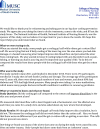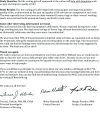Communicating and disseminating research findings to study participants: Formative assessment of participant and researcher expectations and preferences
- PMID: 32695495
- PMCID: PMC7348011
- DOI: 10.1017/cts.2020.9
Communicating and disseminating research findings to study participants: Formative assessment of participant and researcher expectations and preferences
Abstract
Introduction: Translating research findings into practice requires understanding how to meet communication and dissemination needs and preferences of intended audiences including past research participants (PSPs) who want, but seldom receive, information on research findings during or after participating in research studies. Most researchers want to let others, including PSP, know about their findings but lack knowledge about how to effectively communicate findings to a lay audience.
Methods: We designed a two-phase, mixed methods pilot study to understand experiences, expectations, concerns, preferences, and capacities of researchers and PSP in two age groups (adolescents/young adults (AYA) or older adults) and to test communication prototypes for sharing, receiving, and using information on research study findings.
Principal results: PSP and researchers agreed that sharing study findings should happen and that doing so could improve participant recruitment and enrollment, use of research findings to improve health and health-care delivery, and build community support for research. Some differences and similarities in communication preferences and message format were identified between PSP groups, reinforcing the best practice of customizing communication channel and messaging. Researchers wanted specific training and/or time and resources to help them prepare messages in formats to meet PSP needs and preferences but were unaware of resources to help them do so.
Conclusions: Our findings offer insight into how to engage both PSP and researchers in the design and use of strategies to share research findings and highlight the need to develop services and support for researchers as they aim to bridge this translational barrier.
Keywords: Communication; dissemination; research findings; research participant preference; researcher preference.
© The Association for Clinical and Translational Science 2020.
Figures
References
-
- Zerhouni EA, Alving B. Clinical and translational science awards: a framework for a national research agenda. Translational Research 2006; 148(1): 4–5. - PubMed
-
- Partridge AH, Winer EP. Informing clinical trial participants about study results. JAMA 2002; 288(3): 363. - PubMed
-
- Partridge AH, Burstein HJ, Gelman RS, Marcom PK, Winer EP. Do patients participating in clinical trials want to know study results? JNCI Journal of the National Cancer Institute 2003; 95(6): 491–492. - PubMed
Grants and funding
LinkOut - more resources
Full Text Sources
Miscellaneous



